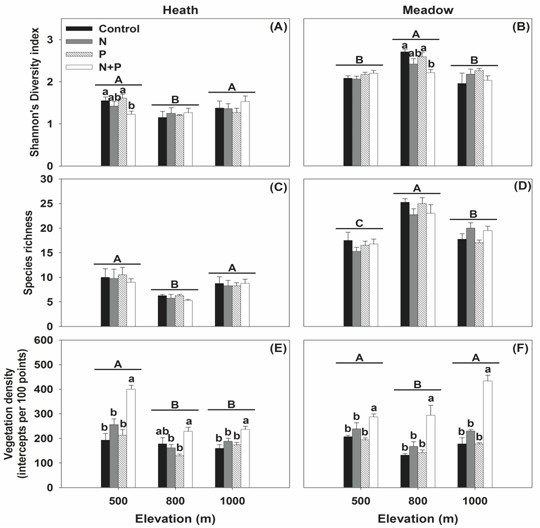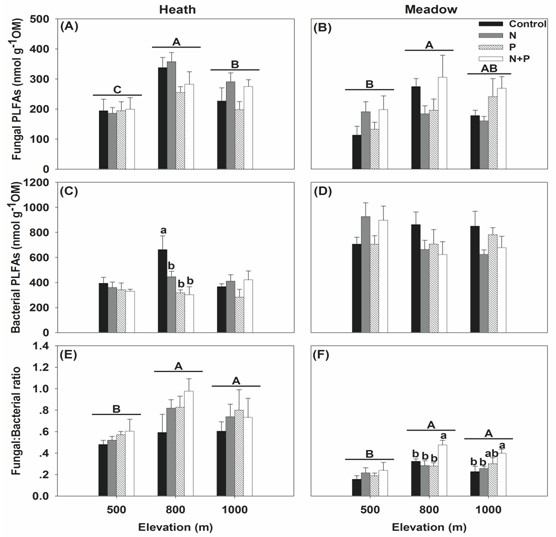Plant and Microbial Responses to Nitrogen and Phosphorus Addition Across an Elevational Gradient in Subarctic Tundra
Temperature is a major limiting factor for high latitude communities and ecosystems such as subarctic tundra, and these systems are therefore predicted to be particularly responsive to global warming. Increasing elevation is associated with a decline in temperature, so elevational gradients represent powerful natural experiments which may inform about community responses to variation in temperature at the landscape-scale when other abiotic factors remain relatively constant. Experimental manipulation of nutrient availability along elevational gradients (and thus temperature) can improve our understanding of ecological responses to climate change.
Dr. LIU Zhanfeng, from South China Botanical Garden(SCBG), investigated plants and microbial responses to nitrogen and phosphorus addition across an elevational gradient in subarctic tundra, in Northern Sweden (Figure 1), by collaborating with the colleagues from Swedish University of Agricultural Sciences and Umea University. The results showed that most plant and microbial properties were responsive to N and/or P fertilization but responses often varied with elevation and/or vegetation type (Figure 2). Vegetation density significantly increased with N + P fertilization relative to the other fertilizer treatments, and this increase was greatest at the lowest elevation for the heath but at the highest elevation for the meadow. Soil microbial communities showed decoupled responses to nutrient addition and elevation compared with plant communities (Figure 3). Soil bacterial biomass were significantly decreased by N + P fertilization for the middle elevation in the heath only, whereas fungal to bacterial ratios were enhanced by N + P fertilization for the two highest elevations in the meadow only.
The results showed how two community types differ in their responses to fertilization and elevation, and the temperature range across this gradient is ~3°C, the results informed on how nutrient limitation in tundra might be influenced by temperature shifts that are comparable to those expected under climate change during this century. These works have been online published in Ecology.

Figure 1. Subarctic tundra in Northern Sweden

Figure 2.Response of plant community to nutrient addition along elevational gradients

Figure 3.Response of soil microbial community to nutrient addition along elevational gradients.
Related paper:
Maja K. Sundqvist, Zhanfeng Liu*(Co-first author), Reiner Giesler, and David A. Wardle. Plant and microbial responses to nitrogen and phosphorus addition across an elevational gradient in subarctic tundra. Ecology, 2014, In press, http://dx.doi.org/10.1890/13-0869.1
File Download: